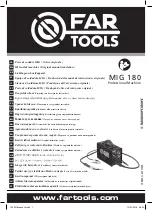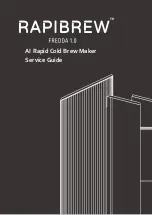
Page 12 of 20
507389-02
Issue 1733
For natural gas installations, check the burner rate by
observing the gas meter (making sure that all other gas
appliances are turned off). The test hand on the meter
should be timed for at least one revolution. Note the
number of seconds for one revolution.
BTU/HR
Input
=
Cubic Feet per
Revolution
x 3600 x Heating
Value
# Seconds per
Revolution
Adjustments – Cooling Section (HWC models)
No adjustments are required or should be attempted
regarding any of the components of the cooling chassis.
The chassis should be checked to see that none of the
wiring is loose or missing.
Cooling chassis is charged with R410A refrigerant.
Blower
The unit contains a direct-drive, multispeed blower. The
proper speeds have been preset at the factory for heating
and cooling. Refer to the wiring diagram or Table 2 for
recommended heating/cooling speeds for specific models.
Direct-drive blower motors are permanently lubricated and
do not require oiling.
Limit Control
A fixed temperature limit control is provided which will shut
off the gas to the main burners if the unit is overheated for
any reason. The control must not be adjusted or relocated.
High Altitude Adjustments (U.S. Installations)
Ratings shown on the rating plate are for elevations up to
2000 feet. For elevations above 2000 feet, ratings should
be reduced at a rate of 4% for each 1000’ above sea level.
Refer to the National Fuel Gas Code Z223.1 (latest edition)
for further explanation.
High Altitude Adjustments (Canadian
Installations)
High altitude conversions may be made by the
manufacturer’s authorized representative, in accordance
with the requirement of the manufacturer, provincial, or
territorial authorities having jurisdiction, and in accordance
with the requirements of CAN/CGA B149.1 or B149.2
Installation Code. A high altitude conversion kit, available
from the manufacturer and approved for this purpose,
must be used.
Installation and Operation in Extremely Cold
Weather Areas
In areas where extremely cold (below – 20°F) outdoor
temperatures can be expected, some additional installation
and operating precautions should be taken. The following
precautions are taken to prevent possible vent system
ice blockage that could result in safety shutdown of the
burners:
1. Adjust to the highest achievable temperature rise
within the rise and static pressure ranges specified
on the rating plate. Depending on specific model, it
may be possible to change to a lower heating blower
speed tap to get a higher temperature rise. This also
increases comfort.
2.
Make sure there are no leaks of outside air into the
return air system.
3. Keep the outside louver grille as free as possible of
any ice that may form and obstruct the flue outlet.
Start-Up
For Your Safety Read Before Lighting
If you do not follow these instructions exactly, a fire
or explosion may result causing property damage,
personal injury, or loss of life.
WARNING
This furnace is equipped with a direct ignition control.
Do not attempt to manually light the burners.
CAUTION
Priming Condensate Trap
The condensate trap must be primed with water prior to
start-up to ensure proper condensate drainage. See Figure
3 or Figure 4 to identify the upper drain hose. Follow these
steps to prime the trap:
1. Disconnect the upper drain hose at the collector box.
2. Rotate the hose from beneath the control board.
3. Flex the hose so that water can be poured into it. Pour
5 fl. oz. (100 ml) of water into the trap.
4. Reconnect the upper drain hose.
5. Follow the lighting instructions to place the unit into
operation.
6. Set the thermostat to initiate a heating demand.
To Light Main Burners
1. Turn off electrical power to unit.
2. Turn the thermostat to lowest setting.
3. Move the gas valve ON/OFF switch to the “ON”
4. Turn on electrical power to the unit.






































